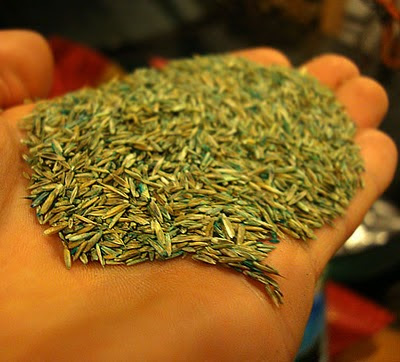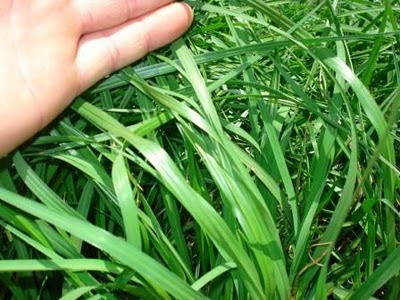Spreading the Seed
Don’t spread the seed by hand. You won’t get the proper distribution and your grass will grow in clumps. For a small lawn, you can use a hand crank broadcast spreader. For larger lawns, a push spreader is ideal.
To improve the distribution, if you have enough seed, repeat the application over 2 or 3 consecutive days.
Cultivating
Once spread, use a rake to work all the seed into the soil. Keep in mind that any that remains visible will likely become birdseed.
Tamp the soil to 'lock' the seed underneath, and level as much as possible. Then water the entire area liberally. Continue watering generously on a daily basis until the grass sprouts evenly. In most cases this is 1 to 2 weeks.
Water at a time of day when the water drops on the new grass won’t burn it—generally late in the afternoon or early in the evening is the best time to water. If it rains significantly, of course, you should avoid over-watering.
When to Mow and Treat
You don’t want to mow the new grass until it is well-established. Wait 2 to 3 weeks after the sprouts appear or until the blades are over 3 inches high.
Also avoid applying weed killer or fertilizer to newly planted grass until it is established. These chemicals can actually burn tender new plants.
Brown Patch Repair
In an established lawn with bare or brown spots, start by digging up the browned areas. Apply more soil if needed. Treat the bare spots as if they were little patches of new lawn, and follow the above steps for seeding a lawn.
You could also purchase grass patch—a dry green foam infused with seed and fertilizer—to place over the bare patches. Simply apply and keep moist until grass sprouts.
Read more:
http://www.doityourself.com/stry/how-to-plant-grass-seed#ixzz0yQidORk6











